|
Mar
18
2022
|
|
Posted 3 years 290 days ago ago by Admin
|
|
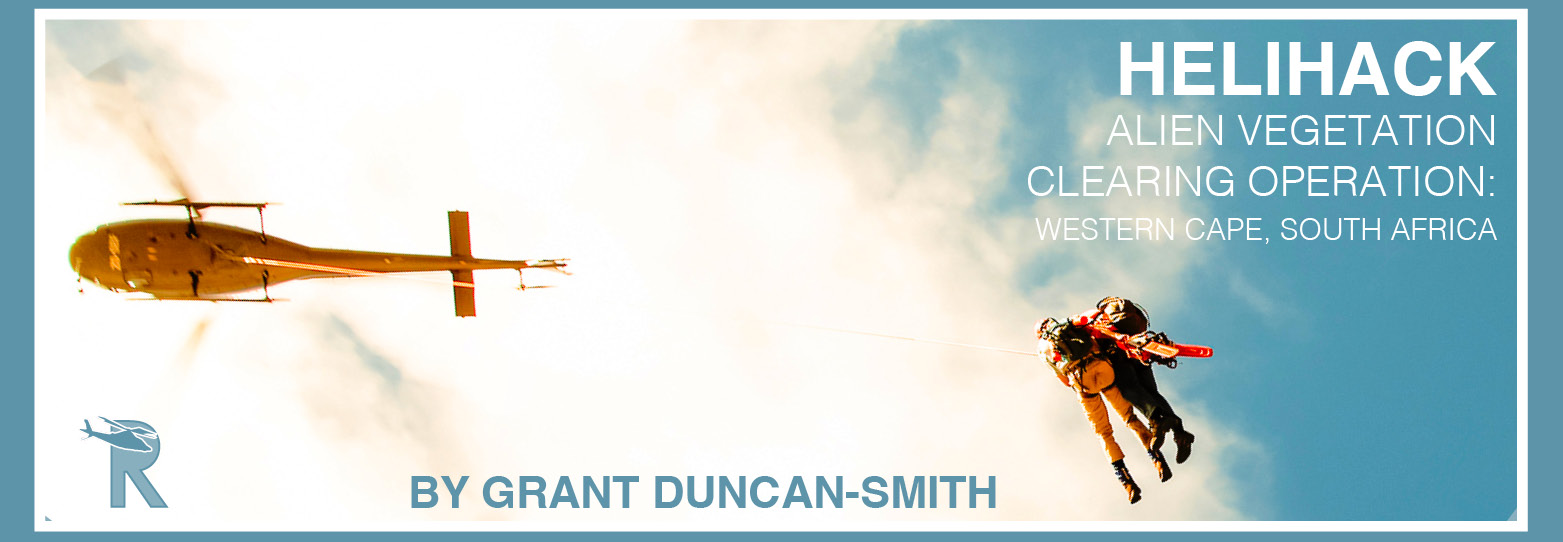
VIEW VIDEO
Combine a highly skilled pilot, a capable helicopter for the environment, and a skilled team of volunteers and you get Helihack. It’s an ambitious and challenging project, placing skilled chainsaw operators high-up by helicopter in otherwise inaccessible mountainous locations.
In late 2017, Cape Town was the first major city in the world to announce it was approaching “Day Zero” – a reference for the day its water supply would largely run dry.
Authorities say they will shut down the municipal water system when the city’s water reservoirs drop to 13.5 percent capacity.
The Helihack project offers one more way to help avoid or at least delay Day Zero by eradicating prolific non-native vegetation in the watersheds surrounding the reservoirs.
The Western Cape mountain ranges cover one of the Strategic Water Source Areas (SWSAs) for surface water in South Africa. SWSAs cover 8% of South Africa yet supply 50% of the mean annual runoff.
Among the biggest threats to SWSAs are invasive alien vegetation and drought exacerbated by climate change.
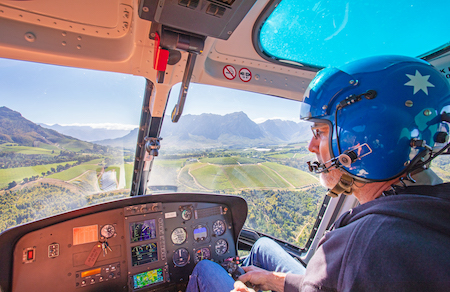
The government also implemented various other water-saving measures including temporary desalination plants, water restrictions on residents and businesses, drilling boreholes, and researching natural aquifer water sources.
In 2018, the drought was declared a disaster in three provinces and therefore a national disaster.
All these measures have pushed back Day Zero, but it still looms as drought conditions remain in some Western Cape regions and climate change continues.
For the Helihack project’s first two and a half years starting in 2014, the focus was on shooting a native fungus-based biocontrol agent called Hackattack from a helicopter to eradicate non-native silky hakea shrubs (Hakea sericea).
Since 2017, the focus has shifted to felling maritime/cluster pine trees (Pinus pinaster). Helicopters carry experienced volunteer rock climbers with chainsaws to inaccessible, rugged mountain areas. Many of the team members also are involved in mountain rescue, which in South Africa is a volunteer service.
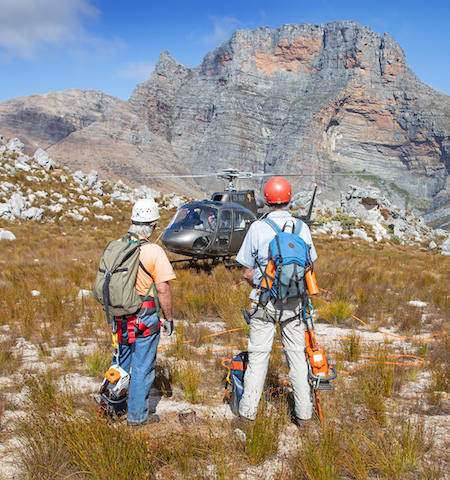
The Helihack project has implemented 16 tree-felling operations over the past four years. The work typically occurs Fridays through Sundays. Volunteers meet up with helicopter crews at a fuel-and-supply station at the base of the mountain range on Friday for their flight high into the mountains. A safety briefing takes place and the tree felling work starts. Work continues on Saturday and the teams are extracted on Sunday.
Teams of two or three members are attached with harnesses to the strop beneath the helicopter (a human external cargo setup), transported to various areas and dropped at each location using a vertical reference long-line technique. Husqvarna and Stihl chainsaws are attached to each volunteer, typically hanging underneath them during the short-haul helicopter flight. Each crew has enough water and food for the day’s activities. Spare parts, extra water and other supplies are dropped off via helicopter to the teams during the day using an underslung cargo net. Some crews stay on a specific mountain section the whole day because of the high number of trees, while others in the steeper, more technical areas are moved a number of times during the day. Teams are equipped with VHF and airband radios for communication with the helicopter and other teams.
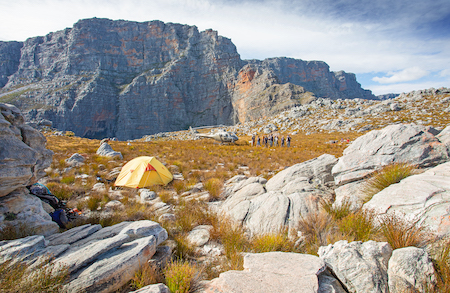
An estimated 4,000-5,000 pines are cut down during a single weekend, depending on their density. If the pines are widely scattered, the total is lower.
For the first Helihack trip, the crew flew in using skid-landings. This was soon discontinued as it was not effective.
The better technique has been the strop with rock climbers and equipment hanging on it. Climbers can be delivered to steeper ground where the pines are commonly situated.
These committed volunteers invest their own money and time into the project. The pilots, who are experienced at flying in mountain areas close to the ground, are paid. As an aircraft is expensive to run and maintain, the project costs an estimated $22,000 per weekend.
Helicopters utilized to date are the Bell 407, AS350 B3 Squirrel, Augusta Koala and Huey. Safety is of prime importance for this challenging and unique undertaking, so experienced pilots and capable aircraft are important. Bronte Heinrich was the pilot on the last few operations using Savannah Helicopters’ AS350 B3. He has extensive experience in firefighting, live-line power line repairs, longline, aerial filming, and aerial construction.
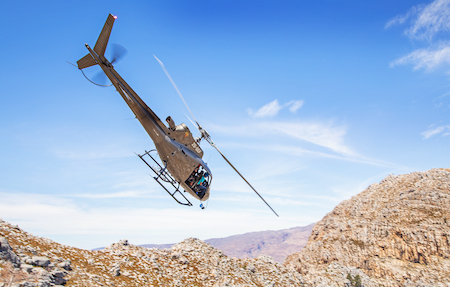
“A helicopter is really the only way to do this job safely and in a reasonable time frame,” Bronte says. “It’s very challenging flying, but also highly satisfying to see how much has been done by the end of the weekend.”
The AS350 B3 is respected worldwide for its operational superiority compared to other single-engine turbine helicopters in its class. It still holds the world record for the highest-altitude landing and takeoff on Mount Everest at 8,848 meters (29,029 feet). Primary use of the AS350 B3 is in hot-and-high operational environments, where it excels. This makes it an ideal helicopter for the Helihack operations. The high-altitude mountainous areas often have unpredictable winds from a variety of directions.
Capacity is for a pilot and up to six passengers, with 4.5 hours of endurance adding to its operational flexibility. The flat floor can easily be configured for aerial work such as the Helihack operation, firefighting, and passenger transport.
The Safran Arriel 2D engine provides 710 kilowatts of takeoff power and a maximum takeoff weight of 2,250 kilograms (approx. 4,960 pounds).
On a maintenance level, Airbus’ support of a worldwide service network ensures the machines experience as little downtime as possible.
The Helihacks that have taken place to date:
2017 March and September at Zuurberg
2018 March and September at Zuurberg
2019 March at Springstygbeugel
2020 March and October at Springstygbeugel
2020 May, August and October at Zuurberg
2021 March, November at Milner Peak (four weekends).
2021 April at Milner Peak
2021 May at Zuurberg
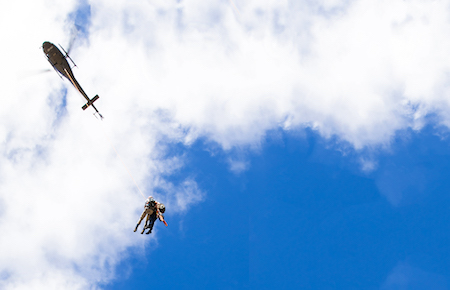
Summing Up
What makes the Helihack project unique is that the highly skilled teams do what other loggers can’t do at high-altitude locations where access is complex and dangerous. Helihack operations are more expensive, dangerous and challenging than other approaches to eradicate invasive alien vegetation, but are more efficient. Remote locations in the high catchments can be cleared to prevent spread downstream.
The Helihack project benefits the people of Cape Town and surrounding areas as it contributes to biodiversity conservation and an increased water yield in the Boland and Groot Winterhoek Strategic Water Source Areas.
The Helihack teams complement other non-native tree clearing projects that focus on rivers and low-altitude areas.
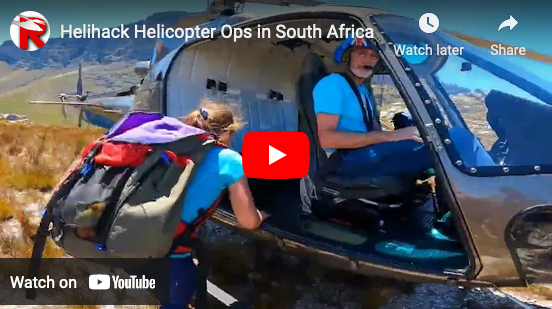
Funding and Organizational Specs
The Helihack project is planned, organized and managed by the highly skilled Aleck and Chris McKirdy, who have assembled and trained enthusiastic volunteer teams.
The project is based on collaboration and partnerships between several agencies and supported by the Agricultural Research Council, Water Boards from Villiersdorp and Hex Valley, the Western Cape Department of Environmental Affairs and Development Planning, and South African National Parks.
Drakenstein Trust coordinates the funding of the project (Contact details: Jay Cowen email: [email protected]). Drakenstein Trust was formed in 1995 and is a registered NPO. Its initial primary purpose was to help finance the development and deployment of biological control agents to combat alien vegetation types prevalent in the Western Cape.
The trust’s mandate has since been broadened to support organizations such as Helihack that clear alien vegetation types, and to provide scholarships to student scientists in relevant fields.
READ MORE ROTORCRAFT PRO JAN/FEB ISSUE
VIEW ROTORCRAFT PRO YOUTUBE CHANNEL